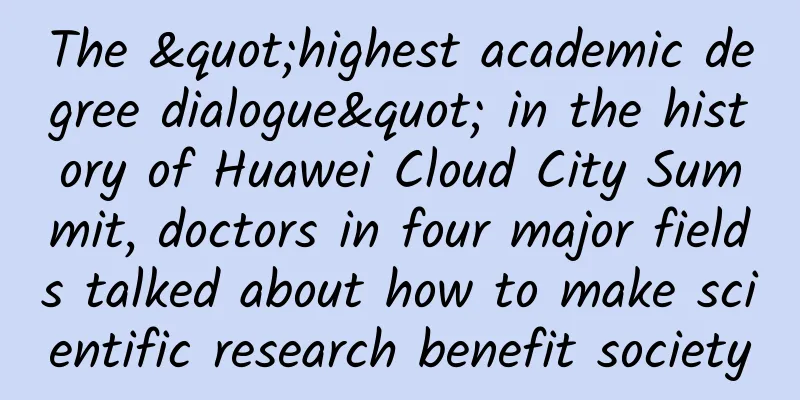With ten times storage cost savings, SINO ADM helps enterprises reduce costs and increase efficiency

|
Preface The COVID-19 pandemic has had an unprecedented impact on the global economy. Against the backdrop of a slowing economy, enterprises and organizations need to deal with exponentially growing data issues and break through bottlenecks in the storage, analysis and processing of massive amounts of data. On the other hand, they need to pay more attention to cost optimization and input-output ratio to improve IT operational efficiency. Today, with the help of the ADM agile data management platform of SINO-Info, enterprises can achieve centralized and unified management of data copies, and use data virtualization technology with core technology patents and unique lossless data compression algorithms to save more than ten times the storage cost, helping enterprises to "reduce costs and increase efficiency"! Data copies bring additional storage overhead In the context of economic slowdown, how to save enterprise storage costs has become an important part of optimizing enterprise IT expenditures. Gartner's "IT Key Metrics Data 2021 Infrastructure Measures — Storage Analysis" shows that among the surveyed companies, most companies spend $416-1048 per TB of data per year, with an average of $652. The smaller the environment, the higher the average cost (the average cost of <3PB is $1141, the average cost of 3-10PB is $671, and the average cost of >10PB is $484).
In addition, many enterprises have a fixed storage resource allocation plan every year. Workloads beyond the plan need to wait for the release of idle storage resources. Even if the additional storage procurement application is approved, it will take some time from approval to completion of the procurement. Both the former and the latter will hinder the enterprise's transformation to agile, and applications cannot be deployed quickly, slowing down the enterprise's operational efficiency. One platform, one data, to meet various business needs of enterprises Today, with the help of the ADM agile data management platform of Shanghai Information, the best practices of CDM technology in enterprise data copy management scenarios are provided. First, using ADM's unique lossless data compression algorithm, an efficient compression storage pool is built with a compression ratio of up to 4:1, realizing storage and compression. Secondly, Shangxun Information has developed data virtualization technology with core technology patents. By sharing virtual data snapshots and mounting them to the target client for use, a single data copy can meet the needs of multiple workloads such as development, testing, backup, recovery, data desensitization, statistical analysis, etc., and supports independent addition, deletion and modification of data.
Customer Practice As a large state-owned communications infrastructure service company with annual revenue of more than 80 billion yuan and managing more than 20,000 employees, by implementing the ADM agile data management platform solution of Shangxun Information, it has built a high-performance, high-stable, and high-reliability hybrid multi-cloud data infrastructure across Huawei Cloud, China Unicom Wo Cloud, and China Telecom Tianyi Cloud. The test data delivery used to be completely manual, but now it is automated. The original 6 people and 1 month of time investment has now been reduced to 2 days, the test data delivery efficiency has increased by 15 times, and the storage space occupied has been reduced by about half... In short, ADM eliminates additional data duplication for enterprises and organizations, implements one platform and one copy of data, and meets the various business needs of enterprises. Enterprises can not only obtain a more optimized input-output ratio and improve IT operation efficiency, but also release expensive storage resources and reduce storage costs. |
<<: Using Jenkins to create continuous integration for microservice applications
>>: API Gateway: Layer 8 Network
Recommend
spinservers: $89/month - E3-1280v5, 32G memory, 1TB NVMe hard drive, 10Gbps bandwidth server
spinservers has released the latest July promotio...
BICS: 5G device connectivity unlocks new IoT use cases
BICS, a global voice operator and mobile data ser...
How to speed up banking business innovation through comprehensive real-time monitoring?
In recent years, with the gradual deepening of th...
Fast, intelligent, and secure cloud application delivery is the new trend in 2017! F5 invites you to start a more free cross-cloud journey
[51CTO.com original article] Cloud computing has ...
Prospects and challenges of 5G messaging development
With the rapid development and popularization of ...
How to use 4G module to transmit temperature and humidity data to onenet via MQTT protocol
[[397604]] This experiment uses the SIM7600CE 4G ...
Brazil: No Huawei in 5G bidding requirements
According to foreign media reports, Brazilian Com...
The 2020 Huawei Ecosystem Partner Elite Competition opens up a channel for ICT talent training and provides the industry with "experts"
[51CTO.com original article] The severe situation...
Discussion on 5G network construction plan
Labs Summary This paper proposes a 5G network arc...
Wi-Fi 7 is on the way, how powerful is it?
In 2019, Samsung and Apple were the first to intr...
Network | Can 5G’s cool applications be realized?
[[322560]] 5G is coming to us rapidly. Once upon ...
RackNerd: $9.49/year KVM-768MB/12GB/2TB/San Jose and other data centers
RackNerd released a March promotion plan, includi...
Wi-Fi 5 is out! Wi-Fi 6 advantages: faster speed/more power efficient
If 2019 is the first year of Wi-Fi 6 commercializ...









